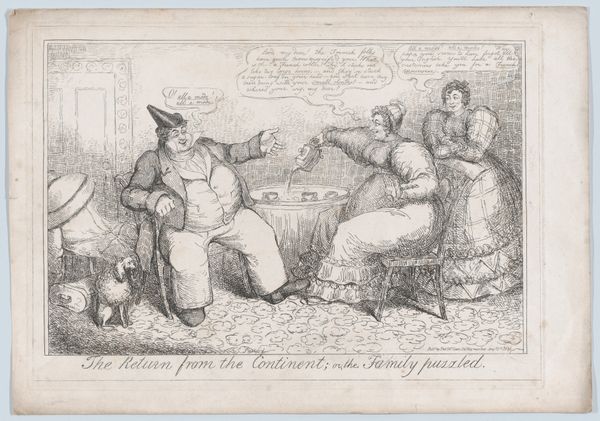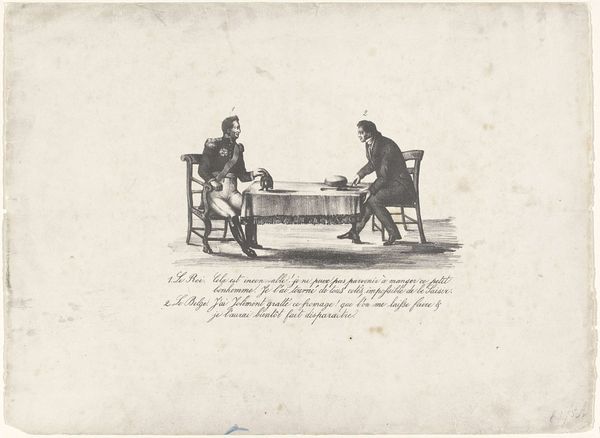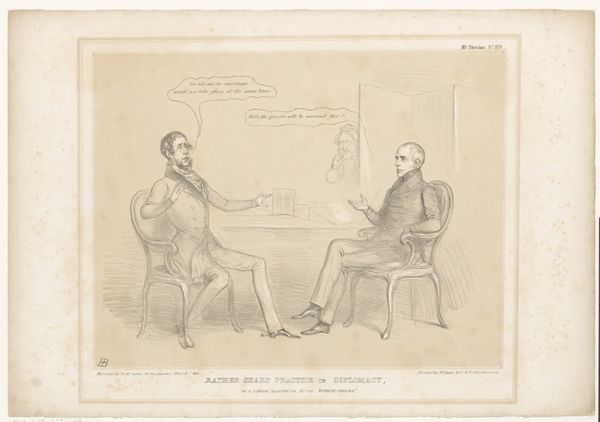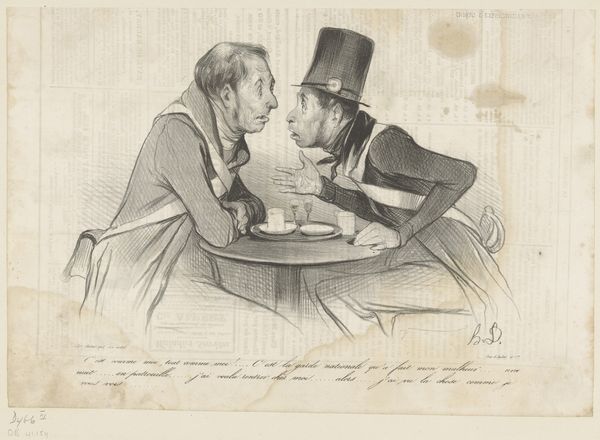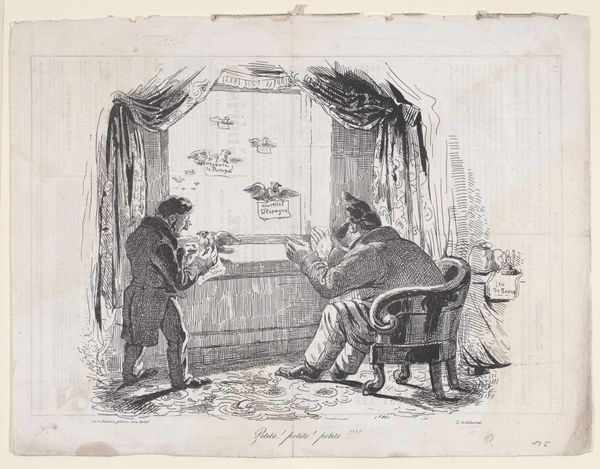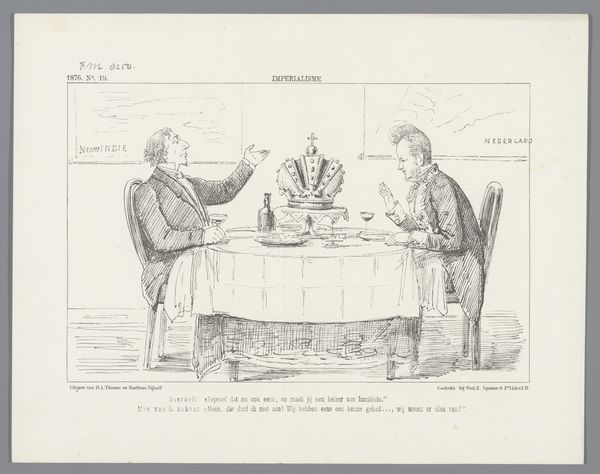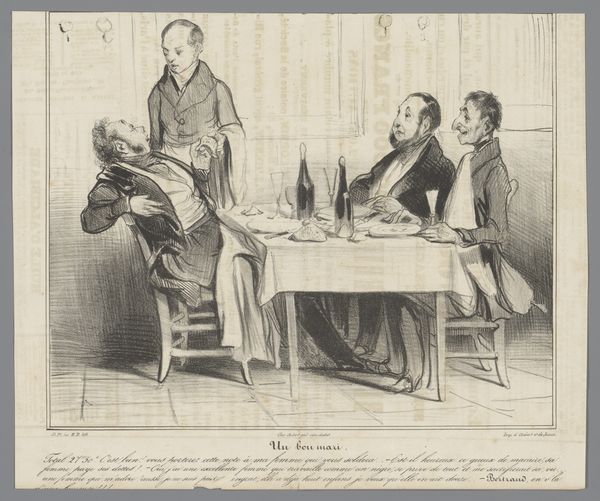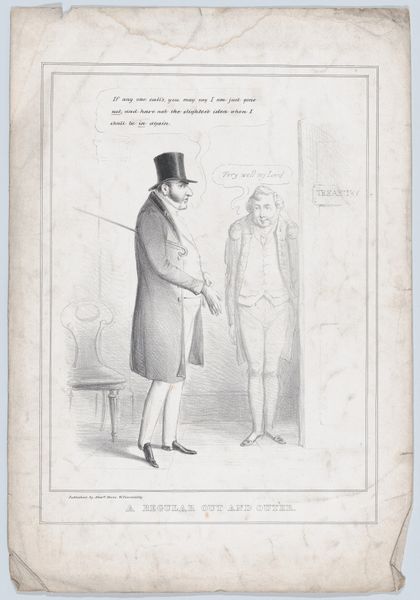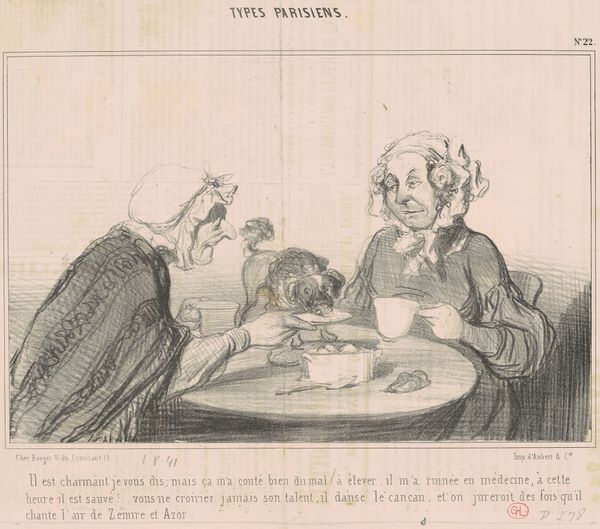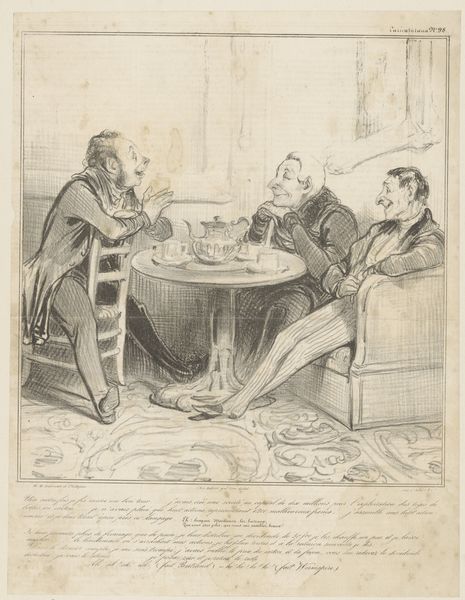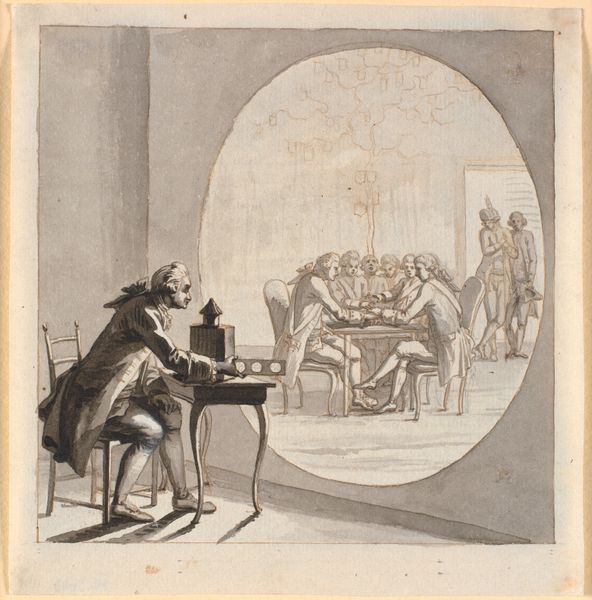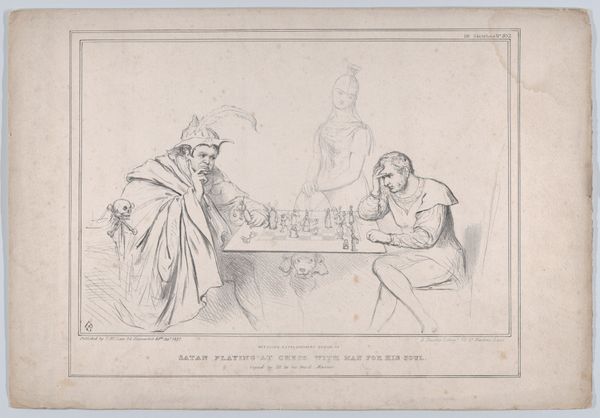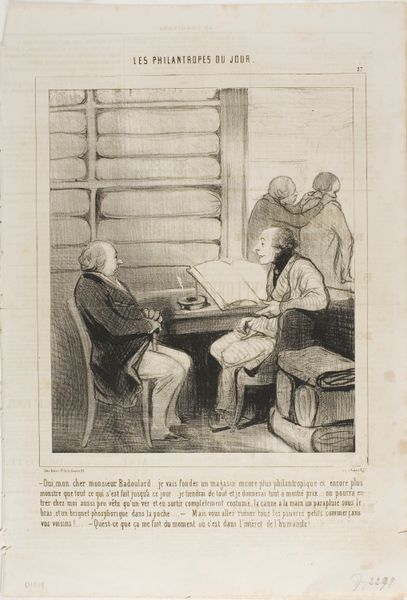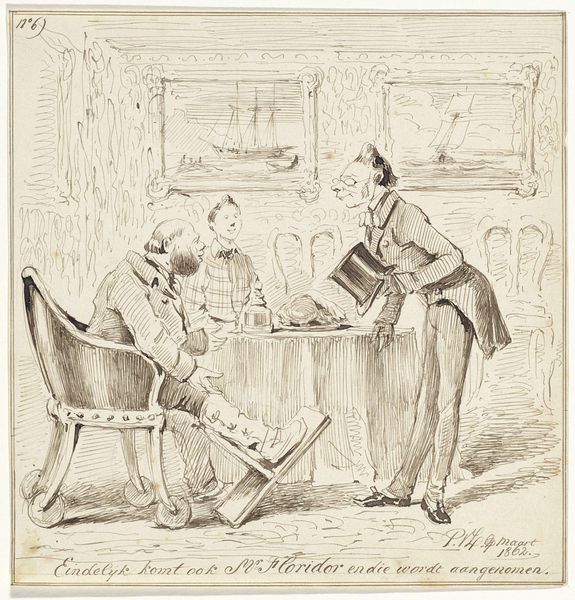
drawing, lithograph, print
#
portrait
#
drawing
#
lithograph
# print
#
caricature
Dimensions: Sheet: 11 9/16 × 14 15/16 in. (29.3 × 38 cm)
Copyright: Public Domain
Curator: Looking at "The Rival Chancellors," a lithograph created in 1834 by John Doyle, what strikes you first? Editor: There's a strong sense of guarded competition in the symbolism here. The placement at a table—usually a place of commonality and communion—is ironically charged with tension. It appears the characters, their placement, and table setting represent some conflict. Curator: Precisely. Doyle used caricature to comment on the political climate. In this print, we see Lord Brougham and Lord Lyndhurst, former and current Lord Chancellors of England, depicted during a public dinner meant to unify Whig and Tory factions. Doyle was well-versed in the radical rhetoric of the era and was commenting on performative displays of unity. Editor: Right, their body language, while engaged, displays the tense environment. I'm interested in the semiotic clues: why are the characters portrayed in that manner and in this setting? The artist exaggerates the men's features for the audience to recognize their real-life counterparts while poking fun at their personalities. Curator: The context is critical. Brougham was a Whig, known for his progressive politics and social reforms, including abolitionism. Lyndhurst, a Tory, represented conservative resistance. Doyle's audience would have easily understood the satirical comparison in how their figures interact at dinner. There's a whole story here about party allegiances, policy differences, and historical struggles reflected. Editor: You're right. Symbols in art are never accidental, are they? Even in the setting, we get to perceive how the placement of the characters, in relation to each other, contributes to how the theme of rivalry comes to light. But beyond all the theory and sociopolitical implications, I keep coming back to how visually concise this piece is—a few lines, and it speaks volumes about political theatrics. Curator: Doyle's caricature captures the deep political fault lines within early 19th-century Britain with incredible subtlety, which makes this piece such a potent historical document. Editor: It's a clever rendering with symbolic and historical implications, proving that artistic commentary truly transcends eras.
Comments
No comments
Be the first to comment and join the conversation on the ultimate creative platform.
